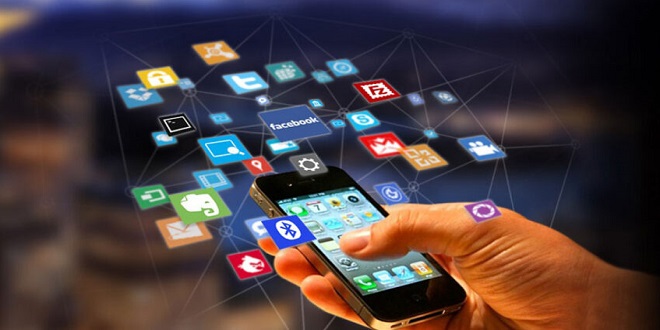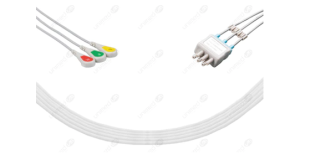In the days before smartphones, life appeared more straightforward. Yet, upon closer reflection, it’s clear that smartphones have genuinely simplified our lives. Let’s explore nine aspects that set life apart before the era of iPhones and Galaxy Notes revolutionized everything.
1. Touchscreens you want to use
The first touchscreens weren’t introduced alongside smartphones. They had existed in different forms for many decades before smartphones came onto the scene. Most of them, frankly, were not great. Then came Apple’s impressive and super-sensitive multi-touch technology on the iPhone. This innovation allowed the screen to respond to multiple points of contact simultaneously, finally delivering on the promise that sci-fi movies had teased us with for years. The era of touchscreens actually working had begun.
Multi-touch also brought along a bunch of cool new gestures, like pinch-to-zoom. Fast forward to today, stroll into a computer store, and you’ll notice fingerprints on traditional desktop monitors. In 2023, touch controls are the norm for many people. We owe that shift to the smartphone.
2. It changed how we pay for things
In a way, the wallet is simply another item on the extensive list that smartphones have taken over. Yet, it holds a special place, arguably the most significant. Thanks to services like Apple Pay and Samsung Wallet, our lives have seen a swift integration. Altering long-standing habits in such a fundamental manner is quite impressive. Not to mention, it’s a massive money-maker for the companies steering these digital domains.
Today, you can buy almost anything using your virtual wallet instead of real cash. Even lottery tickets can be bought online using an e-wallet.
3. The wonderful world of geolocation
Not too far in the past, your gadgets didn’t have a clue about your precise location all the time. Plus, even if you spilled the beans, they kept it hush-hush. Then, along came the smartphone, flipping that script. Geolocation became a game-changer, unlocking a bunch of fresh applications. Think Waze-style crowd-sourced traffic updates, local weather forecasts, and juicy data for companies to aim ads your way.
It’s wild – this geolocation intel has even played a crucial role in murder trials, exposing where someone was at any given moment.
4. Biometrics everywhere
Not too long ago, facial recognition and fingerprint sensors sounded like something from a futuristic tale, much like touchscreens. But times have changed. While they haven’t completely taken over passwords, biometric tech has made huge strides in the last fifteen years, especially on our smartphones.
Nowadays, security features like Touch ID and Face ID on smartphones are so every day that we hardly notice them – and that’s pretty impressive.
5. It brought computing to the masses
Smartphones changed the game for many folks, but picture a world without computers or landline phones before smartphones. These pocket-sized gadgets brought a huge change in the developing world, making information and communication accessible.
Although fancy smartphones got pricier lately, they’re still way more affordable than top-notch computers. Plus, you can find budget-friendly phones with cool features. Smartphones have swiftly become the go-to solution in parts of the world where wired phones and data lines aren’t as practical. They’ve made a big impact, and they did it fast.
6. Informed Shopping
In the days before smartphones, taking a chance on a new product or an unfamiliar brand was like rolling the dice. Luckily, things have changed. Nowadays, you can check out product reviews right there in the store before making your decision at the register. The access to information has never been easier.
7. Taking and Sharing Photos
Nowadays, every smartphone boasts a top-notch camera, complete with. It’s a far cry from the days when carrying a digital or film camera was a must for any trip or special occasion.
Digital cameras made things a bit more convenient, allowing instant photo viewing and quick access. Film cameras, on the other hand, involved a more time-consuming process. You’d collect your film and then go to a studio for development.
Sharing photos used to be a different ball game. In the pre-smartphone era, you’d ask for double prints and physically hand them to friends and family. Now, with a simple tap, you can text, Airdrop, or share photos on social media for everyone to see. Times sure have changed!
8. Working Remote
Occasionally, you’ve got to wrap up work early to catch a train or make it to an event. Yet, just because you’re leaving the office doesn’t mean work magically wraps up, too. In the pre-smartphone era, logging off was the only option, and you had to cross your fingers that nothing urgent popped up until you could reach a computer. The simplicity of that sounds appealing… wouldn’t it be nice to go back?
9. Dating and Long-Distance Relationships
The landscape of dating has been revolutionized by smartphones. In the past, folks typically connected at parties, bars, or through friends. But everything shifted with the surge of dating apps flooding the scene. Now, all it takes is a quick login to Tinder, Hinge, or OkCupid, and the swiping game for potential dates begins.
Long-distance relationships pose challenges. The separation from your significant other can stretch for months. Fortunately, the era of easy video chatting has dawned, thanks to FaceTime and other apps like Skype right on your phone. Without smartphones, anticipating face-to-face interaction would mean waiting until you find a computer with internet access.
 Masstamilan24.com
Masstamilan24.com





